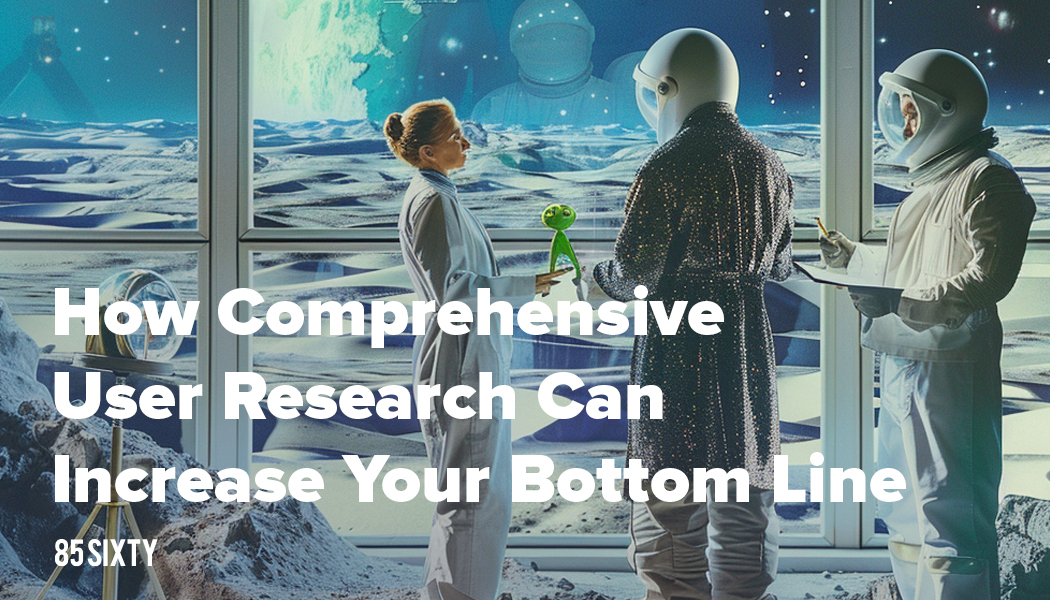
eCommerce Design Pitfalls: Don’t skip Strategy > Good Design
Designing an eCommerce experience is not just about having a visually appealing and functional interface, it’s about creating an online presence that reflects your brand, matches the motivation of your audience, and articulates your value proposition. It’s crucial that you take the time to plan and strategize before designing things that just look cool.
This may seem intuitive, however many marketing teams and business owners make the mistake of skipping or deprioritizing the strategy phase, and as a result, end up with a pretty website that underperforms and fails to meet expectations. In this article, we will explore some of the most common mistakes made when skipping the strategy phase for an eCommerce experience.
Failing to Define Objectives and Goals
One of the biggest mistakes made when skipping the strategy phase is failing to define clear objectives and goals. Without clear goals, it is very difficult to determine if the website is successful or not. Without stated objectives, it’s unlikely that you will design a website that meets the needs of your target audience. Additionally, you risk missing the opportunity to strategically apply a range of objectives to your experience, and define how you plan to measure success.
So what are some common key performance indicators (KPIs) that can be impacted by skipping the strategy phase?
Glad you asked! Here are a few “at risk” KPIs:
Bounce Rate (BR): Skipping the strategy phase can lead to a website that fails to match motivation or is difficult to use, which can result in a negative impact to this important KPI.
Conversion Rate (CVR): Overlooking the strategy phase can result in a website that is not designed with research and data to convert visitors into customers.
Lifetime Value (LTV): Deprioritizing efforts that focus on driving LTV across various segments can lead to stagnant results.
By investing in a well-thought-out strategy, you can design an experience that meets your objectives, serves your audience, and accomplishes your goals. The important part is defining your objectives, audience, and goals up front during the Strategy phase.
Ignoring User Experience
Skipping the strategy phase is basically ignoring user experience (UX). Whether they know it or not, online consumers need three basic UX things; to easily find what they are looking for, fast load times, and to easily understand the actions they can take. The best way to incorporate what consumers need is to place due emphasis on thinking strategically. This type of planning includes things like user journey maps and persona-based user stories.
To put it plainly, a website that is difficult to navigate, slow to load, or confusing to use will drive away visitors and negatively impact your brand. The strategy phase is where you can identify your target audience, understand their needs and behaviors, and design a website that provides a positive and seamless user experience.
Neglecting Search Engine Optimization (SEO)
SEO is an important factor in the success of any website. If you skip the strategy phase, you risk missing the opportunity to plan for and implement effective SEO strategies that can help your website rank higher in search engine results pages (SERPs) and attract more organic traffic. This can result in a website that is invisible to search engines and difficult for potential customers to find.
Overlooking Mobile Users

With more and more people using their mobile devices to shop for products online, it’s important to design a website that is not just mobile-friendly but mobile-optimized. Just imagine every mobile user on your experience has the attention span of someone in line for coffee.
Applying mobile priorities must be executed during the strategy phase. Tactics like copy suppression and content prioritization are set in place and vital to success. Neglecting mobile strategy leads to poor performance outcomes.
Underestimating the Importance of Content
Content is the backbone of any website. It’s what informs, engages, and converts visitors into customers. When you skip the strategy phase, you risk missing the opportunity to plan for and create high-quality, relevant, and compelling content that meets the needs of your target audience and supports your business goals.
Putting It All Together
Creation of a strategic plan improves usability, acquisition, device specific performance, the effectiveness of content and also increases the efficiency of your resources. We covered the importance of establishing Objectives and KPIs, the vital role of strategy-based user experience, SEO considerations, and mobile-optimized v mobile-friendly. To be honest, you have less than 15 seconds to get a user to engage with something. Let that sink in. In an arena competing for eyes on screens, leave nothing to chance.
At 85SIXTY we specialize in providing partners with analytics-driven online experience strategies that meet objectives, serve the audience, and facilitate increased performance. Additionally, if you are reading this and have implemented a design-first approach and need someone to fix it, we can do that too.



